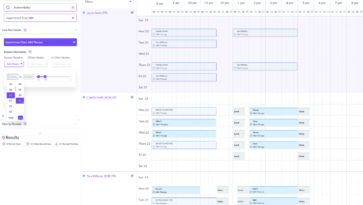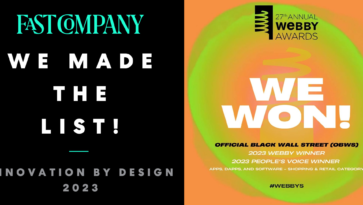A Two-Sided Marketplace exists when there is an intermediary that facilitates exchange between buyers and sellers or two complimentary user types. In terms of product development, this intermediary manifests itself as a platform or a digital space where user types like buyers and sellers coexist. In order to build a digital platform with the goal of providing value to both of these user types, there are multiple factors that must remain top of mind for product teams, including scalable system architecture and human-centered design and balancing the feature development based on where the most value can be generated; the supply side or the demand side of the market. Another critical question is whether one side of the market is owned by the business or if both sides of the market have to be acquired in the wild.
Here at Sidebench, when we embark on these types of builds we prioritize elements such as acquisition funnels, onboarding, retention, engagement, stickiness, referrals, and robust technical infrastructure. Our Product Managers uncover opportunities to provide continuous value to users beyond initial assumptions, thereby incentivizing the supply side and the demand side to continue to bring their own specific and unique value to the marketplace through actions garnered by the platform. As a strategic partner, we also focus on the overarching business goals to help scale profit models including elements like product penetration, seeding supply and demand, and network effects, all of which we will describe in further detail below.
When attempting to solve the challenge of stickiness, establishing network effects is a main focus to maintain the attention of different user types without relying on platform-generated methods such as push notifications. Network effects are ways in which the value of a platform grows with each new user that signs on.
We often see businesses over-index on their acquisition efforts seeking to outgrow their attrition while completely neglecting their product’s ability to become sticky and drive retention. Retention is one of the best levers a product has to create value for the business. If users are engaged through sticky interactions and find enough value in the product to keep coming back, those users generate revenue at no additional cost to acquire. Focusing entirely on acquisition comes at a cost per new user while the bucket is leaking existing users. We like to make sure the buckets don’t leak!
Here at Sidebench, when we strategize and design the user experience we empathize heavily with the users who will be living in that experience. We take the term human-centered design very seriously, basing most decisions from feature prioritization to golden path wireframes on insights gathered from user research. We’re often recognized for our design abilities, but not because of implementation at random of the latest trends like glassmorphism or scroll-triggered animations, but instead, we base design decisions on insights gathered from fully comprehensive user personas.
Insights gathered from the user not only influence design elements, but also the strategy we employ when uncovering ways to seed supply and demand for both sides of the marketplace, doing so is essential to building something valuable for both user types. Conducting interviews with users that match a targeted demographic will uncover pain points that are not being addressed in the respective competitive landscape. These insights influence the features we implement and validate the solution we propose. This requires a deep understanding of the problem we’re solving and the value proposition we’re presenting to the market and how that ladders back up to the business strategy.
As we move through discovery engagements we place an emphasis on how the existing business strategy couples with our suggested product strategy to define how we can best approach solving the problem in a way that unlocks the largest total addressable market. Taking this holistic approach to product development separates Sidebench from other dev shops that build products without truly understanding the business strategy, that does not define a clear product strategy, and don’t deeply empathize with the audiences they are solving those problems for.. Focusing on and defining these business elements is a key differentiator for Sidebench.
One of the most memorable platforms we’ve built where we were able to leverage our thought leadership for a 2 sided marketplace was in our partnership with Imagine Impact. Imagine Impact democratizes access to opportunities for those looking to break into the entertainment industry. Through robust user research, we were able to visualize and document a user journey for scriptwriters and production companies. We leveraged these user journeys to highlight specific network effects allowing each user to bring more value to the marketplace with every interaction.
Are you working on a two-sided marketplace? We’d love to collaborate with you! Fill out this form and meet the team! We’d love to hear about what you’re up to and discuss how we can help accelerate your outcomes!







